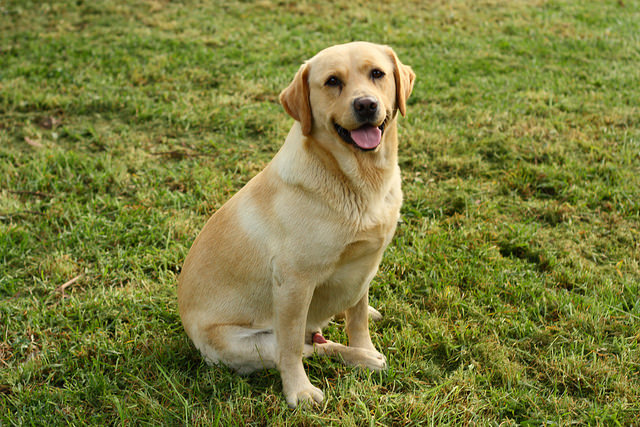For most Labrador Retrievers, teaching “sit” isn’t difficult because they have a problem being in the actual position. The hard part with a Lab is getting them to sit still, especially if they are under the age of 5 (and I’ve known some 12-year-olds that still had trouble!). If you have struggled with getting your Lab to sit, don’t worry, you are not alone. Here is an easy and effective way to teach your Lab how to sit on the first cue, every time.

Capturing The Behavior
You are going to use a form of training called “capturing.” This is when you wait for your Lab to offer what you want and then you mark it (with a click or a verbal word such as “yes” or “good”) and then reward. Capturing is a great way to train because it makes your Lab use their brain to figure out what you want. Labs are smart and like a job, so use that mind! Plus, behaviors taught through capturing are much stronger than those taught using other methods.
To capture your Labrador performing a sit, have your reward (toys, treats, etc.) ready and your clicker, if you use one. You can keep your Lab on leash at first to keep him from wandering. Now, just stand still and wait. Most dogs will eventually sit when you ignore them long enough. As soon as his bottom hits the floor, mark and reward. Toss the reward away so your dog has to get up to get it – thus resetting him for the next sit.
Do short training sessions, just 5-10 minutes, a couple times a day.
Lunging Lab
If your Lab is just too excited to even think about sitting, you may find you have to start by shaping the sit behavior. To do this, start by marking and rewarding your Lab any time she keeps those four feet on the floor. Once she is standing still, delay the click and see if she offers something else. Eventually, she will start trying other behaviors, including a sit. Mark and reward with lots of treats, then try again.
Also, be careful you are not using too high of a reward. If you are using your Lab’s favorite toy, for example, it may be making him too amped to work. Instead, try using a less exciting toy or kibble so he can focus.
Adding the Cue
Once your Labrador Retriever sits without any “extra behaviors,” he’s figured out what you want. At that point, you can add the cue. Adding the cue—”sit”—is easy. Just say the word as your Lab is getting into the sit position, then mark and reward.
Do a few repetitions of this and then test the cue by saying it while your Labrador is standing. If he promptly sits, he’s got it – reward heavily! If he doesn’t, that’s okay. Do nothing and just wait for him to sit and say the cue during the sit a few more times and test again.

Fading the Treats
Once your Lab is sitting beautifully in multiple places every time you say “sit” just once, it’s time to fade those treats. You can use other rewards – verbal praise, toys, petting, etc. – anything your dog likes.
If your dog doesn’t sit when you say the cue once, too bad, no reward. But this won’t happen very often with this form of training. If it does, your Labrador may be distracted by his environment or even nervous or stressed. Use it as information and assess the situation before you ask your dog again – you may need to put some distance between him and an object or leave the environment altogether if he is really nervous.
Now you’re ready to move on to “stay”!
